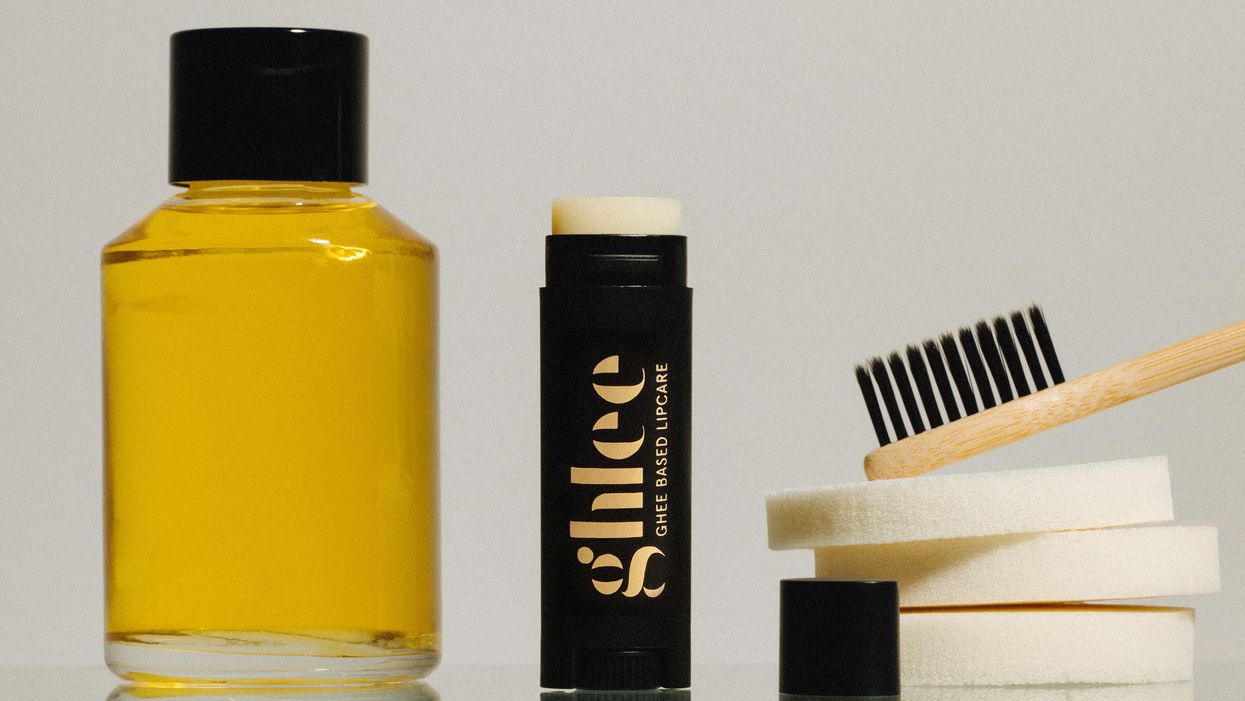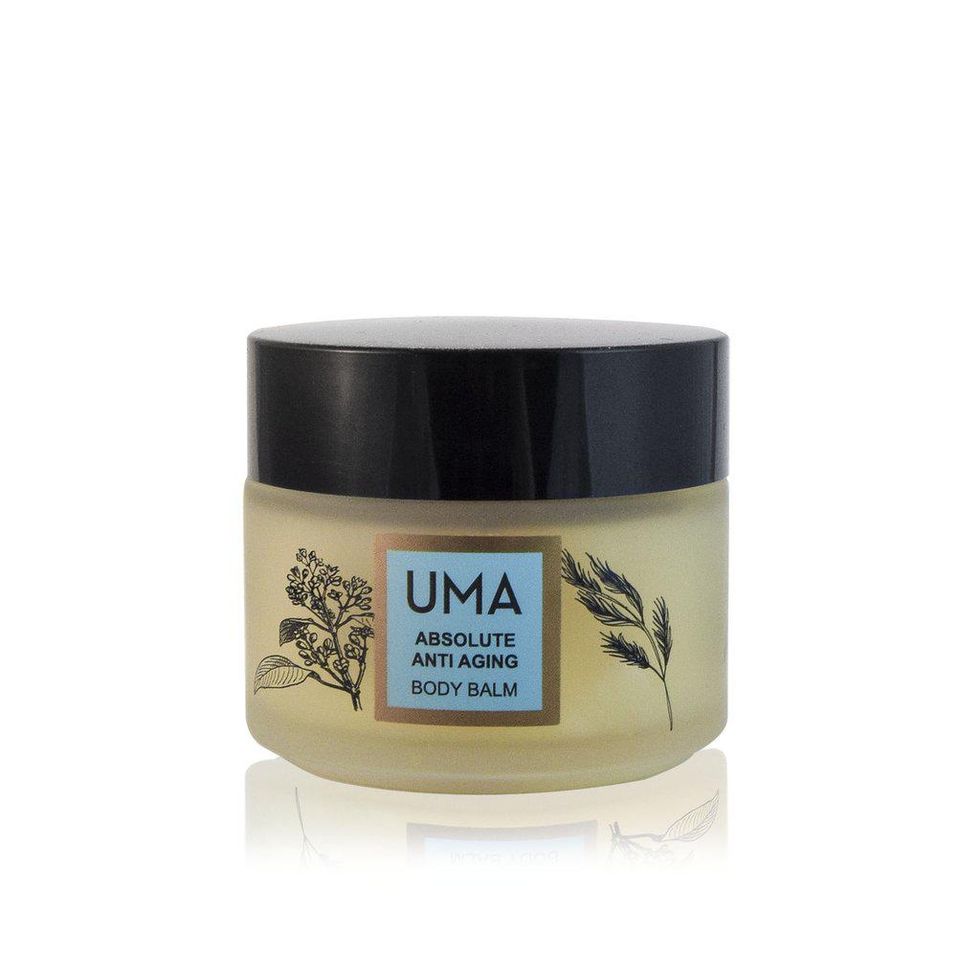The Must-Try Winter Skin-Care Ingredient Is Probably in Your Pantry
Yet another ingredient coming off of your plate and into your skin-care routine.

Growing up, Sunday mornings in the Sharma household always tasted like parathas topped with ghee. But when Varun Sharma started experiencing dry, cracked lips as a child, his mom told him that nutty-tasting clarified butter doesn’t just belong on his plate — it can be used for skin, too. “My mom used to always say, just put some ghee on,” he recalls. “But I thought, I’m not going to just put clarified butter on my lips and go to school.”
Naturally, when Varun and his sisters launched their ghee-centric skin care company, Ghlee, in 2019, they started with a lip balm crafted from their father’s custom ghee recipe.
Ghlee is tapping into the time-honored practice of using ghee as a multipurpose skin salve. “Ghee has been used for many, many years as an Ayurvedic treatment for skin due to its natural moisturizing and nourishing benefits,” says Toronto-based dermatologist and Skin Science founder Dr. Geeta Yadav. “It's rich in fatty acids, which help maintain your skin's moisture barrier, and also has antioxidant properties that can stave off signs of premature aging caused by free radicals.”
But in spite of the benefits, ghee is still weighed down by preconceived ideas. “The biggest misconception is that it’s so greasy and has a strong smell,” Varun says.
It has all the makings of a super-ingredient, but it’s important not to label it as trendy or new. Ghee has been a longtime skin staple in India, Bangladesh, and other South Asian countries, says Dr. Yadav. So it’s not a new discovery — it’s just new to the mainstream skincare market in the West.
“I actually think that there’s a little bit of trauma, especially for South Asian-Canadians and Americans. There’s a little bit of that internalized baggage that people have. Like, is [Ghlee] going to smell like Indian food? It doesn’t, but it’s OK if it does,” says Varun’s sister and co-founder Arati. “We should all just own it.”
“There’s a lot of momentum around [ghee],” Arati continues. “It’s interesting seeing it on the shelves and in the Whole30 Program knowing that in our minds, we always thought it was weird. Now it’s a big thing. It’s kind of like how everyone’s making turmeric lattes now.”
So how can you appreciate ghee without exoticizing it? It starts with understanding the ingredient’s roots and supporting South-Asian-owned businesses. Below, Dr. Yadav, Arati, and Varun break down how you can work it into your routine this winter.
Is ghee good for my skin?
“Ghee has antibacterial, anti-inflammatory, and antiviral properties,” explains Dr. Yadav. These pros are amplified if the ghee is sourced from grass-fed livestock. “Ghee is naturally rich in lauric acid, a fatty acid also found in coconut oil, which has been shown to help kill acne-causing bacteria.”
What if I have oily skin?
If you have oily skin, Dr. Yadav says that you’re bound to get the most out of ghee if you limit it to the driest parts of your body, where you’re least likely to break out. Think lips, cuticles, elbows, knees, and heels.
Ghee’s all-over appeal follows in the tradition of ingredients like olive oil or coconut oil, Arati says. “If you think about ghee being used back in the day in the village, the reason why it was used in everything is because you farm it and you have it so you use everything on the farm. It was used for the body, for hair, for cleaning, for face, for food — everything.”
How else can you use ghee?
When it comes to homemade skin treatments, Dr. Yadav says that ghee can be a substitute for coconut oil. “For more enhanced benefits, you can DIY your own treatments by mixing ghee with ingredients like turmeric for a brightening mask, chickpea flour for a nourishing exfoliating mask, honey for a moisturizing mask, or sugar for a lip scrub,” she suggests.
Shop the story:
Photo: Courtesy of Ghlee
Want more stories like this?
These AAPI-Owned Beauty Brands Go Back to Their Roots
Why We’re Adding Grapeseed Oil to Our Skin-Care Routines
This Hero Ingredient Is the Ultimate Skin-Care Multitasker—And It Was Developed by Accident







